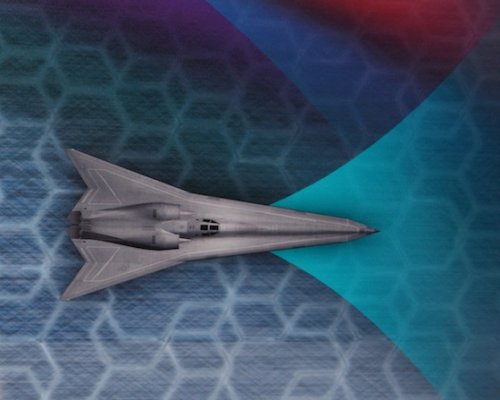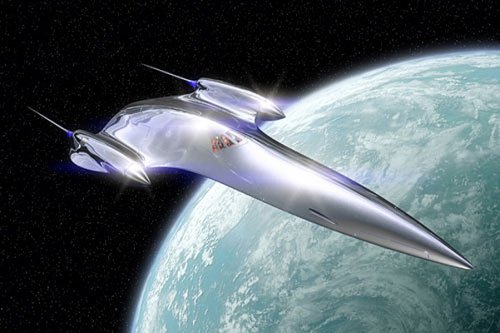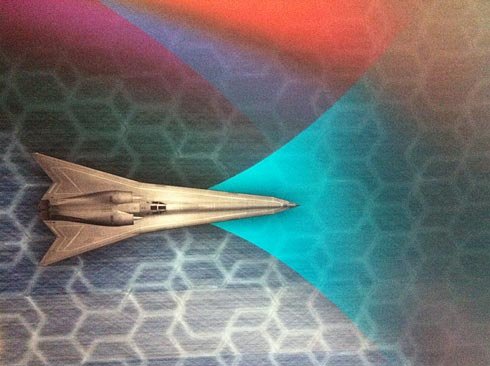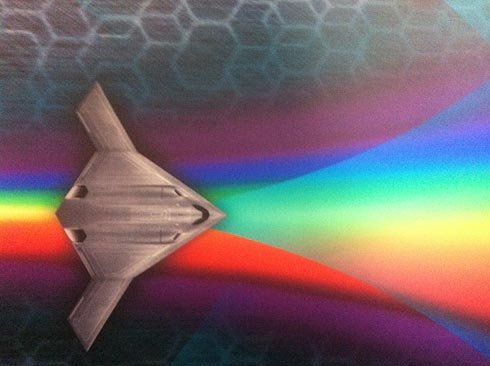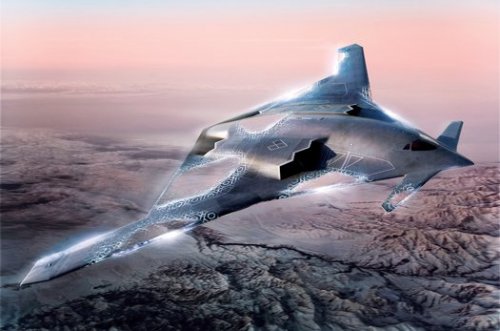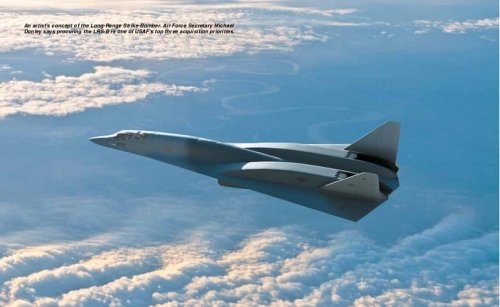- Joined
- 21 April 2009
- Messages
- 13,714
- Reaction score
- 7,584
USAF's Bomber Will Be One Aircraft, Not Many By DAVE MAJUMDAR
Published: 15 Jul 2011 16:29
The U.S. Air Force's new Long Range Strike (LRS) family of systems will not consist of multiple aircraft types, as widely believed. Instead, the service will most likely develop a single bomber airframe that will be able to conduct a range of missions, says the service's deputy chief of staff for operations, plans and requirements. Depending upon its payload, said Lt. Gen. Herbert "Hawk" Carlisle, the new bomber will be able do everything from electronic attack (EA) to intelligence, surveillance, and reconnaissance (ISR) - and will be key to the U.S. military services' emerging AirSea Battle doctrine. "When we talk a family of systems, I don't necessarily think you're going to make four different airframes or five different airframes," Carlisle said in a July 14 interview. "There is either the ability to plug and play, or the same platform with different capabilities being ISR, EA or kinetic attack, or you have the ability of using other techniques of cross-domain and multi-domain capability to bring those things to bear."
Carlisle spoke just hours after the outgoing vice chairman of the Joint Chief of Staff, Marine Corps Gen. James Cartwright, questioned the requirements being set for the bomber program. A self-confessed "bomber-hater," Cartwright told reporters that he wonders whether the aircraft, slated to be optionally manned, needs a human crew. ICBMs and submarine-launched ballistic missiles don't have people aboard them, he reasoned. "Nobody has shown me anything that requires a person in the airplane. Nobody," Cartwright said. "I'm waiting for that argument and I haven't found it yet." The survivability technologies needed to build an aircraft as the Air Force wants would just make the plane unaffordable, he said. Cartwright said he believes the Air Force needs to think about an aircraft inexpensive enough to buy by the hundreds, not the 80 to 100 bombers planned.
He said the plane should be "a truck that has today's state-of-the-art survivability attributes," yet conceded, "A long-range, long-endurance asset that's an air-breather makes a lot of sense." Carlisle said the number of planned bombers reflects much analysis. "We've done a lot of work on the analysis of the fighter-bomber blend," he said. "There are scenarios where you rely on a heavier requirement for bombers and less for fighter aircraft, and there is the reverse … all the analysis indicates that we have that mix about right." Carlisle said the bomber would not be a modular aircraft, but might carry mission-specific payloads.
"It very possibly could be where the payload could be an ISR package, EA package or a kinetic strike package," or even carry enough gear to do several jobs at once, he said. Carlisle cited the F-22 Raptor, the stealth fighter jet that used to be described as an electronic vacuum cleaner that would "suck up intel." Mark Gunzinger, an analyst at the Center for Strategic and Budgetary Assessments (CSBA) in Washington, said he expected a multi-mission bomber. "You'd want those attributes for an aircraft you'd expect to operate in non-permissive environments, where you may not have a secure command-and-control link," said Gunzinger, a former Air Force B-52 bomber pilot. He said the aircraft would need to be able to defend itself and be able to find and track its own targets. Carlisle said the bomber program will be key to the AirSea battle concept that the Air Force, Navy and Marine Corps are working on together. The concept is meant to defeat emerging anti-access/area denial (A2/AD) threats, Carlisle said. "Without the Long Range Strike family of systems, you can't do AirSea battle," Gunzinger said.
The bomber, when operating in highly contested areas, would be supported by assets in space and the cyber domain, Carlisle said. And, he hinted, the other services might in turn be vital to the bomber as it punches through the teeth of enemy air defenses. "It could be supported by a submarine," he said. "It's AirSea battle, it's the whole integration of multi-domain and cross-domain capabilities." Gunzinger said using the Navy's submarines to help knock out the most potent of the enemy's air defenses would greatly increase the new bomber's potential. "Undersea capabilities would play a critical role in AirSea battle as we described it at CSBA," he said. AirSea battle will be a comprehensive concept that will include everything from training, to doctrine, to new "materiel solutions" to allow the three services to work together much more tightly, Carlisle said.
One of those solutions could be a new Navy long-range unmanned strike aircraft, Gunzinger said. Much of the concept involves taking advantage of the unique capabilities of each service to support the others against A2/AD threats so that they work in a complementary fashion, Carlisle said. In some cases, all three services will have to possess a certain capability, he said. In others, one will take the lead, and there also are areas where both the Navy and Air Force will have to develop completely new capabilities.
"We've taken 'joint' to the next level. So it's beyond 'joint,' it's integrated across domains," Carlisle said. "It's F-35s, the bomber, it's submarines, it's surface capabilities, it's space capability, it covers the spectrum." AirSea battle is not necessarily designed for the western Pacific theater, but rather for the Air Force and Navy's global responsibilities, Carlisle said. Gunzinger cited Iran as another nation that is developing capabilities to prevent U.S. forces from operating in its vicinity.
Published: 15 Jul 2011 16:29
The U.S. Air Force's new Long Range Strike (LRS) family of systems will not consist of multiple aircraft types, as widely believed. Instead, the service will most likely develop a single bomber airframe that will be able to conduct a range of missions, says the service's deputy chief of staff for operations, plans and requirements. Depending upon its payload, said Lt. Gen. Herbert "Hawk" Carlisle, the new bomber will be able do everything from electronic attack (EA) to intelligence, surveillance, and reconnaissance (ISR) - and will be key to the U.S. military services' emerging AirSea Battle doctrine. "When we talk a family of systems, I don't necessarily think you're going to make four different airframes or five different airframes," Carlisle said in a July 14 interview. "There is either the ability to plug and play, or the same platform with different capabilities being ISR, EA or kinetic attack, or you have the ability of using other techniques of cross-domain and multi-domain capability to bring those things to bear."
Carlisle spoke just hours after the outgoing vice chairman of the Joint Chief of Staff, Marine Corps Gen. James Cartwright, questioned the requirements being set for the bomber program. A self-confessed "bomber-hater," Cartwright told reporters that he wonders whether the aircraft, slated to be optionally manned, needs a human crew. ICBMs and submarine-launched ballistic missiles don't have people aboard them, he reasoned. "Nobody has shown me anything that requires a person in the airplane. Nobody," Cartwright said. "I'm waiting for that argument and I haven't found it yet." The survivability technologies needed to build an aircraft as the Air Force wants would just make the plane unaffordable, he said. Cartwright said he believes the Air Force needs to think about an aircraft inexpensive enough to buy by the hundreds, not the 80 to 100 bombers planned.
He said the plane should be "a truck that has today's state-of-the-art survivability attributes," yet conceded, "A long-range, long-endurance asset that's an air-breather makes a lot of sense." Carlisle said the number of planned bombers reflects much analysis. "We've done a lot of work on the analysis of the fighter-bomber blend," he said. "There are scenarios where you rely on a heavier requirement for bombers and less for fighter aircraft, and there is the reverse … all the analysis indicates that we have that mix about right." Carlisle said the bomber would not be a modular aircraft, but might carry mission-specific payloads.
"It very possibly could be where the payload could be an ISR package, EA package or a kinetic strike package," or even carry enough gear to do several jobs at once, he said. Carlisle cited the F-22 Raptor, the stealth fighter jet that used to be described as an electronic vacuum cleaner that would "suck up intel." Mark Gunzinger, an analyst at the Center for Strategic and Budgetary Assessments (CSBA) in Washington, said he expected a multi-mission bomber. "You'd want those attributes for an aircraft you'd expect to operate in non-permissive environments, where you may not have a secure command-and-control link," said Gunzinger, a former Air Force B-52 bomber pilot. He said the aircraft would need to be able to defend itself and be able to find and track its own targets. Carlisle said the bomber program will be key to the AirSea battle concept that the Air Force, Navy and Marine Corps are working on together. The concept is meant to defeat emerging anti-access/area denial (A2/AD) threats, Carlisle said. "Without the Long Range Strike family of systems, you can't do AirSea battle," Gunzinger said.
The bomber, when operating in highly contested areas, would be supported by assets in space and the cyber domain, Carlisle said. And, he hinted, the other services might in turn be vital to the bomber as it punches through the teeth of enemy air defenses. "It could be supported by a submarine," he said. "It's AirSea battle, it's the whole integration of multi-domain and cross-domain capabilities." Gunzinger said using the Navy's submarines to help knock out the most potent of the enemy's air defenses would greatly increase the new bomber's potential. "Undersea capabilities would play a critical role in AirSea battle as we described it at CSBA," he said. AirSea battle will be a comprehensive concept that will include everything from training, to doctrine, to new "materiel solutions" to allow the three services to work together much more tightly, Carlisle said.
One of those solutions could be a new Navy long-range unmanned strike aircraft, Gunzinger said. Much of the concept involves taking advantage of the unique capabilities of each service to support the others against A2/AD threats so that they work in a complementary fashion, Carlisle said. In some cases, all three services will have to possess a certain capability, he said. In others, one will take the lead, and there also are areas where both the Navy and Air Force will have to develop completely new capabilities.
"We've taken 'joint' to the next level. So it's beyond 'joint,' it's integrated across domains," Carlisle said. "It's F-35s, the bomber, it's submarines, it's surface capabilities, it's space capability, it covers the spectrum." AirSea battle is not necessarily designed for the western Pacific theater, but rather for the Air Force and Navy's global responsibilities, Carlisle said. Gunzinger cited Iran as another nation that is developing capabilities to prevent U.S. forces from operating in its vicinity.

